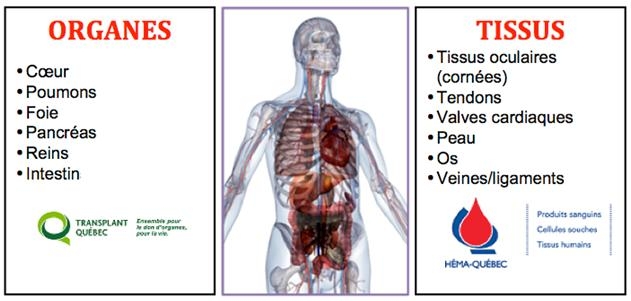Maintaining the hemodynamic stability of potential donors
The physiological disruptions that follow brain death often compromise the viability of transplantable organs. These disruptions can lead to cardiovascular, endocrine and metabolic disturbances as well as a loss of internal homeostasis. These changes result from powerful parasympathetic and sympathetic stimulation, from the autonomic storm and from a generalized inflammatory response.
Suboptimal management of potential organ donors can lead to a loss of 30% of transplantable organs. In clinical practice, hypotension, diabetes insipidus, hypernatremia, arrhythmia, pulmonary edema, metabolic acidosis, secondary infections and disseminated intravascular coagulation are common among donors. Other easily avoided set-backs are also responsible for a significant loss of organs. Examples include pulmonary atelectasis, which has frequently caused the loss of lungs.
Systematic and methodical donor management maximizes the number and quality of transplantable organs. Donors are no longer rushed to the OR so that organs can be retrieved as promptly as possible. Rather, today’s approach consists in taking the time to stabilize, treat and recover the function of as many of the donor’s organs as possible.
Since 2004, this approach has made several dozen additional transplants possible. In fact, a number of physicians have been able to restore function to many hearts and lungs by applying organ function recovery protocols.
The following guides was created to help health professionals maintain optimum donor organ function in order to save the lives of as many people awaiting a transplant as possible.
EVA-GUI-001.F Guide relatif à l'évaluation et au maintien du donneur adulte
EVA-GUI-001.A Adult Organ Donor Assessment and Management Guide
EVA-GUI-005.F Guide relatif à l'évaluation et au maintien du donneur pédiatrique
EVA-GUI-005.A Pediatric Organ Donor Assessment and Management Guide
8 in 10 patients still have a functioning kidney graft after 5 years.
7 to 8 patients in 10 survive at least 5 years after receiving a heart or liver transplant.
Evaluating the donor and qualifying organs

During this step, Transplant Québec’s clinical coordinator/advisor arrives at the ICU to meet the family, complete a medical and social questionnaire with the family’s help or continue, in conjunction with the treatment team, to evaluate the donor and each organ for which consent has been obtained.
In the event that Transplant Québec’s clinical coordinator/advisor is unable to reach the identifying health centre, whether due to the particular situation or to distance, he or she will contact the family by phone to complete the medical and social questionnaire. Also, he or she can be reached by phone at any time to answer questions from the treatment team.
This evaluation and qualification period can last from 12 to 24 hours.
This step is essential to the transplant teams’ ability to properly evaluate the eligibility of each potential donor organ. Also, it is essential to take the necessary time in the critical care unit to optimize the function of each organ and, consequently, maximize the number of transplantable organs per donor.
At this stage, the treatment team needs to conduct an effective assessment of each organ, as each could be allocated to one of eight different potential organ recipients.
Which organs can be transplanted?

In the case of someone donating both organs and tissues, Transplant Québec will contact Héma-Québec.
During the evaluation of the donor and the organ for which consent has been obtained, further tests could be requested in order to verify the function of each potentially transplantable organ.
The most common tests are:
Blood tests (electrolytes, blood cell counts, liver enzyme, creatinine, etc.)
Chest x-rays
Abdominal ultrasound
Echocardiography
Coronary angiogram
Abdominal and chest scan
Bronchoscopy
Depending on the situation, some of these tests will be performed at the identifying centre and others at the retrieval centre.